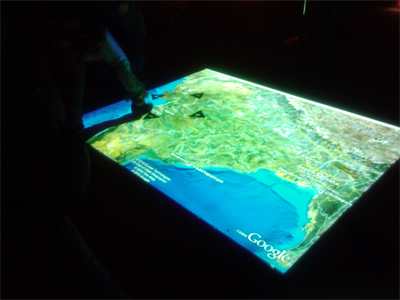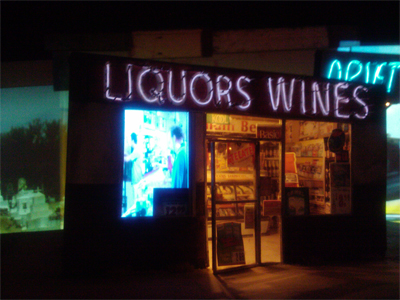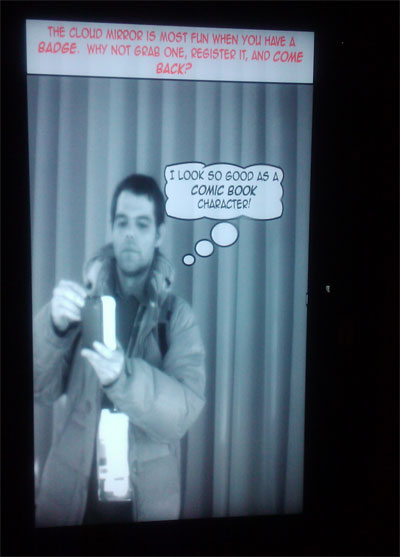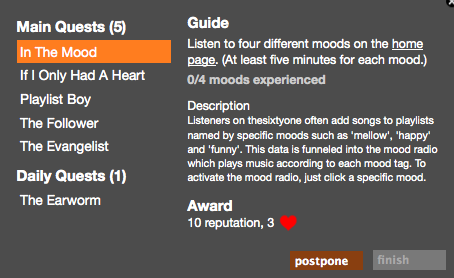Matador’s new release from Esben and The Witch is both interesting and haunting. The video for Marching Song is the same except with a hint of disturbing.
The Music Scene: A.F. Schepperd
Wild animation by A.F. Schepperd commissioned by Ninjatune Records for Blockhead’s “The Music Scene.” (Hat tip yvynyl)
“The Music Scene” from Anthony Francisco Schepperd on Vimeo.
Google Chrome Speed Tests
Hats off to BBH New York and Google Creative Lab for crafting an excellent way to demonstrate the speed of chrome while at the same time providing visual candy.
Equipment used:
– Computer: MacBook Pro laptop with Windows installed
– Monitor – 24″ Asus: We had to replace the standard fluorescent backlight with very large tungsten fixtures to funnel in more light to capture the screen. In addition, we flipped the monitor 180 degrees to eliminate a shadow from the driver board and set the system preferences on the computer to rotate 180 degrees. No special software was used in this process.
– Camera: Phantom v640 High Speed Camera at 1920 x 1080, films up to 2700 fps
thesixtyone
I’ve been tracking thesixtyone for a bit. The first version of the site matched social gaming with music discovery. The newest incarnation has taken a slightly different approach one which is more discovery focused with a mix of simple challenges called quests that encourage you to listen to music and gain reputation points.
The part I love about the new design is the simplicity and richness of the interface.

State of the Internet
A visual snapshot of internet consumption – provides an interesting look at the state of the internet in 2009.

The Tingler (1955) William Castle
I received a mention in a New York Times article entitled Talking About a Revolution (for a Digital Age) The article also references William Castle and the experiences he created around his work. Castle was an inspiration for some of the Cinema ARG experiences I did around my last film Head Trauma. DIY and the concept of transmedia were popular topics at Sundance this year and both have been popping up more and more in the press. Here’s a trailer from 1955 where Castle – always the showman – is plugging the experience around his newest film The Tingler.
SUNDANCE – a look at the frontier section
I spent the last few days at the Sundance Film Festival. When I’m at the fest I always make it a point to checkout the Frontier which is located in the basement of a mall. Its a sprawling space that brings together a nice mix of new media, tech and art. Here are a few pics.




This Decade is About the Filter

More than a decade ago it was “search” that was driving innovation and large investments in both infrastructure and talent. When Google first started indexing unique URLs in 1998 there were already 26 million. Two years later the amount of indexed pages had crossed the billion mark. Flash forward to this winter and the amount of unique URLs exceeds 1 trillion.
We are swimming in a sea of data. On average Americans wade through 34 gigs of information a day according to a recent report by researchers at the University of California, San Diego. The ability to “filter” this information will drive future innovation. How people are posting, commenting and clicking will greatly impact the ways films are created, curated and shared over the next decade.
The desire to tap into social data is evident in recent deals that have Google, Microsoft and Yahoo lining up to access Twitter’s feed in an effort to improve their own traditional search results. The fact that three leaders in search are interested in something as small as 140 characters of information points to the value of social streams. From breaking news instantly, in many cases before traditional outlets, the power of word of mouth threatens to devalue massive ad spends by the studios; the ability of people to connect and communicate in real time through handheld devices is challenging many established industries while at the same time enabling a new form of social curation.

